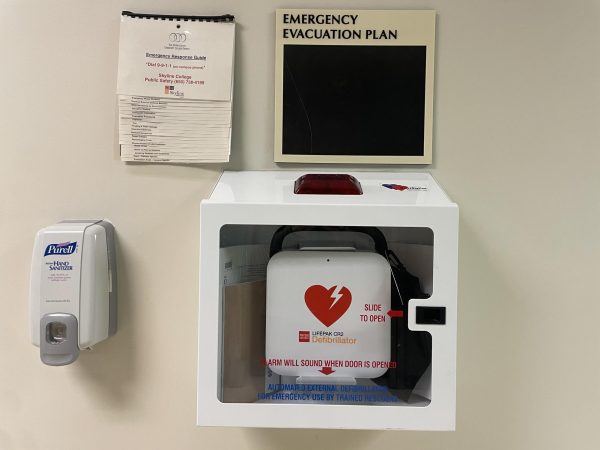What price can you put on safety?
As a result of the many mass shootings at U.S. schools, adequate communication throughout campus is more vital than ever.
The need for an emergency response speaker system at Skyline’s Child Development Laboratory Center (CDLC), Building 14, is important for the safety of the children, students and faculty in that part of campus. Speaker systems like this are essential in disseminating information to students and faculty in the area. They can be used to alert people when there is a drill going on, if there is an earthquake or if there is a shooter on campus.
The emergency response system Skyline currently has is located on the main campus, making it discernible only to Buildings 1-8. However, outlying buildings like the CDLC, don’t have a speaker system connected to the one on campus and are therefore at risk because they don’t hear the alarms.
Right now, Master Teacher at the CDLC, Adrienne Villegas says that in order to hear drills going on at the main campus, faculty has to stand outside, and even then, the alarms are muffled. This becomes especially hard when trying to hear the alarms over the shouts of children. Villegas said that lockdown drills can’t be heard inside the building or on the other side of the building and even when standing outside, she cannot make out the instructions given through the speaker system on campus.
Although Tina Watts, the Child Care Service Coordinator, has a walkie-talkie that connects to the Public Safety Office in Building 6, she says that she hasn’t been notified of a lockdown through the device because Public Safety doesn’t want any radio communications going on at the time.
This is seriously problematic because the center accommodates 45-50 children ages 18 months to 5 years old as well as students and faculty, all of whom could be in danger during a campus lockdown and not even know it.
Another pressing concern for the CDLC is the fact that the center has historically been “forgotten about” when it comes to receiving the all-clear at the end of a lockdown drill. Because the sound of the lockdown alarm does not reach the building, the occupants are dependent on Public Safety officials to either radio or show up in-person to let them know that the drill is over. However, on several occasions, they have not received the all-clear and have had to shelter in place until the teachers or students with the ALERTU system downloaded on their phone have received a message from the school declaring the campus safe again. Even then, cell service on campus is sketchy.
As for emergencies at the CDLC, Watts has been given two panic buttons but they are not mobile. One is located in Watts’ office and the other is at the front desk. Watts’ job requires her to leave campus during the day sometimes so there is not constant access to the button. The front desk panic button is also not practical because there are parts of the day where there is no one staffing the front desk. This means that in the event of an emergency at the CDLC, the only way they can readily contact police or Public Safety on campus is by calling on a landline.
Watts says the lack of an emergency response speaker system is a “cost issue”. But what price can you put on safety?











